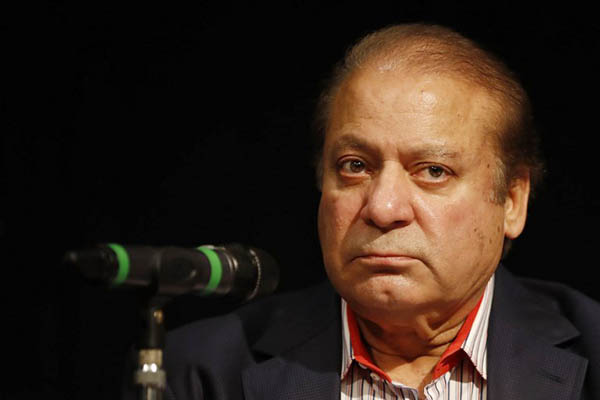
File photo. Tolga Akmen—AFP
Pakistan Muslim League (Nawaz) leader Nawaz Sharif’s formal backing of his brother, Shehbaz Sharif, as the prime minister has triggered commentary over his legacy, recalling the tug-of-war between him and the military establishment that has defined his political journey. Sharif has served as Pakistan’s prime minister thrice—and been ousted as many times—with multiple attempts to permanently sideline him falling by the wayside. The results of the Feb. 8 general elections, however, have sparked speculation that it was “decided” he should remain in politics, just not in power.
This commentary stems from the belief in some quarters that the PMLN was “promised” around 120 seats in the National Assembly—sufficient to form government without requiring the support of any major political party. In this scenario, Nawaz was poised to head the government. The results of the Feb. 8 polls, however, ended this “plan,” coming mostly in line with pre-poll forecasts that had anticipated a majority of “independents” rather than any single party. But even before the polls, Nawaz’s disenchantment with the electoral process was clear: the PMLN was the last major party to launch its electoral campaign, reportedly because the former prime minister was not enthused about having to work under the restrictions imposed by the civil-military Special Investment Facilitation Council, aimed at kickstarting the economy.
Historians, meanwhile, maintain that Nawaz was never a real contender as the establishment has always abhorred popular challengers, often spearheading the ouster of past favorites as soon as they start questioning its right to lay down the rules. Nawaz has been a “marked” man since he locked horns with the generals during his first term as prime minister, but remained—until recently—the PMLN’s most potent card. Years of media management and a clear field for rival Imran Khan, however, have now left him a mere passenger on the bus. The PMLN’s decision to appoint Nawaz’s daughter, Maryam Nawaz, the Chief Minister of Punjab appears to be a concession to appease Nawaz, who would undoubtedly serve as active adviser in a bid to revive his party’s fortunes in its former stronghold.
At the same time, Prime Minister Shehbaz Sharif will strive to facilitate his niece, while also keeping the PPP satisfied to prevent his own ouster. The PTI’s potential to play spoiler remains but is markedly diminished with the ongoing incarceration, and bar on holding public office, of party founder Imran Khan. The party has also diminished its own standing in Parliament by having its lawmakers join the Sunni Ittehad Council en masse, despite clear concerns about how its “sectarian-sounding” name might be perceived among a public often shaken by religious conflict. With the new government required to hit the ground running to tackle prevailing crises, one thing is clear: all bets are off and the coming years will prove challenging for both the public and its leadership.
